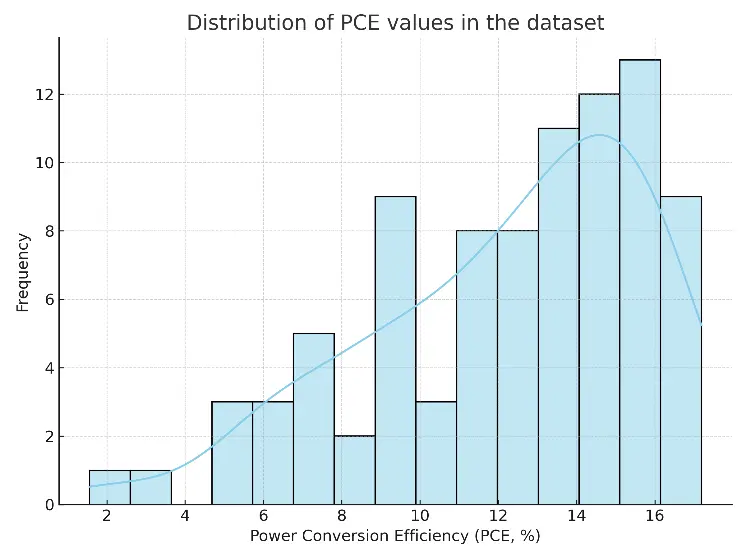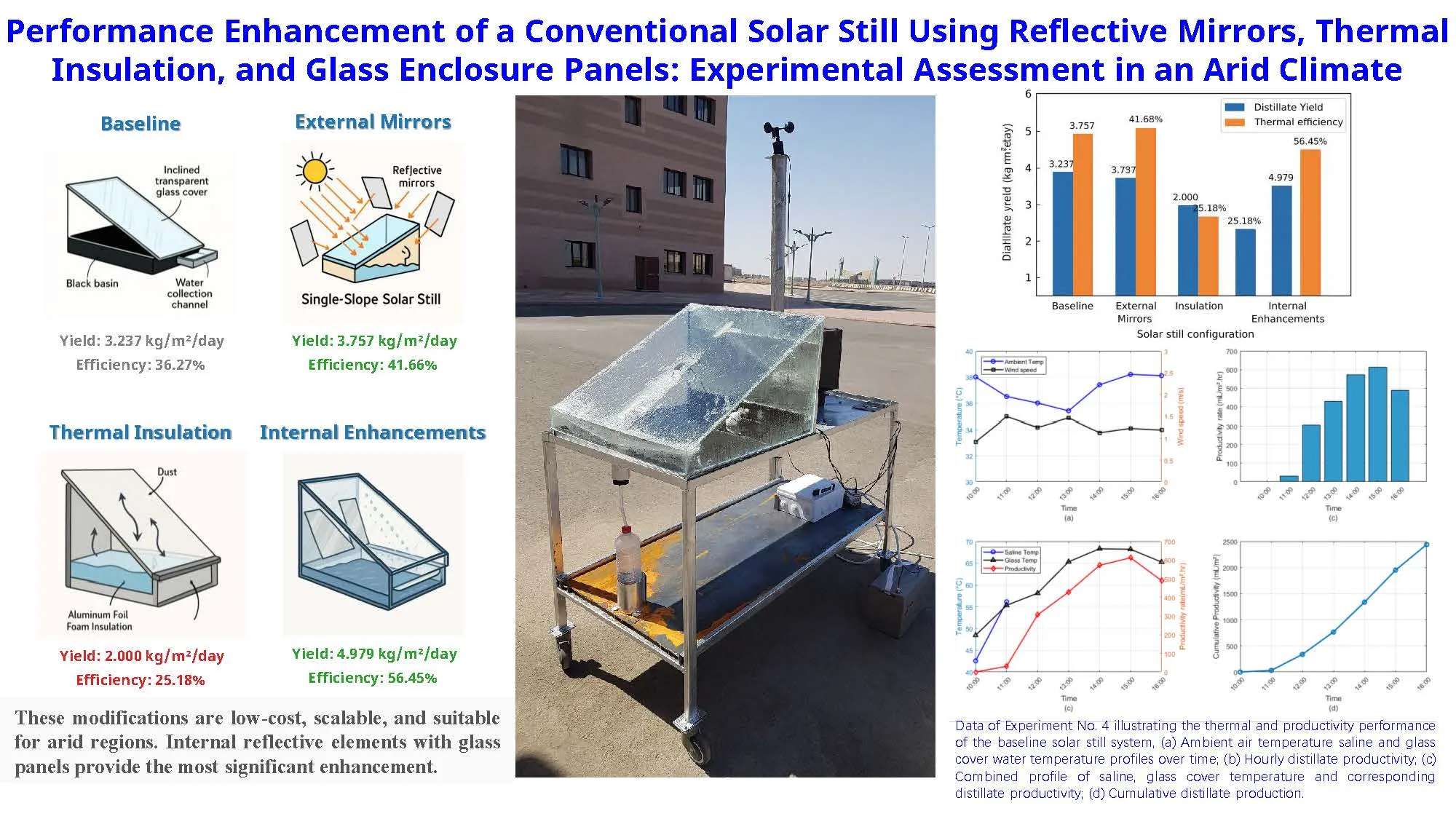Open Access
Article
25 September 2025Detection and Classification of Faults in a Photovoltaic System—A New Hybrid Algorithm
Four main types of faults can occur at the DC side of any Photovoltaic System (PVS). These faults are quite dangerous and can cause permanent damage to the photovoltaic modules if not addressed promptly. The faults include open circuit, short circuit, degradation, and partial shading. Short circuit faults are classified into line-to-line (L-L) and line-to-ground (L-G). Detecting these faults requires specialized algorithms. This paper tackles this complex issue through (1) fault-finding equations and the placement of current sensors, and (2) a new hybrid algorithm based on data from the fault-finding equations and current sensors. Numerous simulations using PSIM 2021 were conducted to verify this proposed solution. The hybrid algorithm presented here is original compared to previous studies. It is easy to understand, responds quickly, and can be implemented in systems with photovoltaic arrays of any size.
Open Access
Communication
24 October 2025Investigating Potential PFAS Emissions from Initial Electrolyzer Operation
The fluoropolymers used in proton exchange membrane (PEM) water electrolysis are part of the broad OECD definition of per- and polyfluoroalkyl substances (PFAS), a family of substances subject to increasing regulation. Potential PFAS emissions during commercial operation have been investigated in PEM fuel cells, but have not been reported for PEM electrolyzers. Based on previous measurements of fluoride release rates in water, potential emissions of fluorinated substances are likely to be detectable during the onset of stack operation. This observation is extended to evaluating potential PFAS emissions by collecting and analyzing recirculated water samples from a multi-megawatt PEM electrolyser plant in the first ~2 weeks of operation. No PFAS substances were detected using U.S. EPA Method 1633, consistent with the lack of observed degradation based on cell voltage and fluoride measurements. Methodologies for selecting and handling water samples were established. Minimizing gas crossover and maintaining water quality during electrolyzer operation can mitigate potential chemical degradation via hydroxyl radical formation. Implementing dual uses of the reverse osmosis deionization system to provide water and wastewater treatment can increase closed-loop operation and minimize potential PFAS emissions from wastewater.
Open Access
Article
31 October 2025Performance Evaluation of Machine Learning Algorithms for Predicting Organic Photovoltaic Efficiency
This study forecasts the power conversion efficiency (PCE) of organic solar cells using data from experiments with donors and non-fullerene acceptor materials. We built a dataset that includes both numerical and categorical features by using standard scaling and one-hot encoding. We developed and compared several machine learning (ML) models, including multilayer perceptron, random forest, XGBoost, multiple linear regression, and partial least squares. The modified XGBoost model performed best, achieving a root mean squared error (RMSE) of 0.564, a mean absolute error (MAE) of 0.446, and a coefficient of determination (R2) of 0.980 on the test set. We also assessed the model’s ability to generalize and its reliability by examining learning curve trends, calibration curve analysis, and residual distribution. Plots of feature correlation and permutation importance showed that ionization potential and electron affinity were key predictors. The results demonstrate that with proper tuning, gradient boosting methods can provide highly accurate and easy-to-understand predictions of organic solar cell efficiency. This work establishes a repeatable machine learning process to quickly screen and thoughtfully design high-efficiency photovoltaic materials.
Open Access
Article
03 November 2025Sequential Thermal and Optical Upgrades for Passive Solar Stills: Toward Sustainable Desalination in Arid Climates
This study investigates the thermal performance and freshwater productivity of a passive single-slope solar still under four distinct configurations, aimed at enhancing distillation efficiency using low-cost modifications. The experiments were conducted in Tabuk, Saudi Arabia (28°23′50″ N, 36°34′44″ E), a region characterized by high solar irradiance ranging from 847 to 943 W/m2. The baseline system, constructed with a stainless-steel basin and inclined transparent glass cover, served as the control, achieving a cumulative distillate yield of 3.237 kg/m2/day and a thermal efficiency of 36.27%. Subsequent modifications included the addition of external reflective mirrors (Experiment 2), aluminum foil foam insulation (Experiment 3), and internal enhancements with side glass panels and internal aluminum mirrors (Experiment 4). Results demonstrated that the external mirror modification improved the distillate yield by 16% to 3.757 kg/m2/day, with a corresponding efficiency of 41.66%. However, insulation under dusty conditions led to a reduced yield of 2.000 kg/m2 and an efficiency of 25.18%, highlighting the critical influence of solar transmittance. The most notable improvement was recorded in the fourth configuration, which combined internal reflective elements and transparent side panels, resulting in a maximum yield of 4.979 kg/m2/day and thermal efficiency of 56.45%. These findings confirm that optical and thermal design enhancements can significantly augment the performance of passive solar stills, especially under high-irradiance, clear-sky conditions. The proposed modifications are low-cost, scalable, and suitable for implementation in remote and arid regions facing freshwater scarcity. This study offers valuable insights into the systematic optimization of solar distillation systems to improve sustainable water production.
Open Access
Article
02 December 2025The Role of Electric Vehicles in Environmental Transformation-Goal Towards a Pollution-Free Climate
Government agencies have worked tirelessly to minimize the effects of pollution. This problem is pretty dominant in developing countries like Pakistan. The world is facing a severe problem in the form of pollution and the greenhouse effect in recent years. At present, cities like Karachi and Lahore are facing a very high index of Air pollution caused by vehicular emissions. In this framework, the current research proposes an optimized design of student electric vehicles to attenuate environmental pollution. Electric vehicles produce zero tailpipe emissions, which means no toxic gases. A Carbon Footprint Analysis is conducted in the proposed study to measure the effect of greenhouse gases over the various phases of a vehicle’s life. To simulate the long-term impacts of electric vehicles on the environment, Agent-based Modelling is performed. It mainly includes the analysis of technological advancements in battery recycling. The idea of the student electric vehicle is based on several key points, including the use of an AGS (Automatic Gear System) and Self-Driving mode, to make it easier for students to navigate. Further, a sensing mechanism is developed for predictive maintenance and diagnostics. Hence, the proposed idea of student electric vehicles may be a game-changer for the students by providing them with a safe and pollution-free environment. The analysis shows that EVs like those proposed by students will reduce life cycle emissions by upto 71 percent as compared to ICE.
Open Access
Review
12 December 2025Bibliometric Review of Bio-Based Building Materials and a Comparison with Prior Research: Toward Probabilistic Approaches for Material Variability
The purpose of this article is to extend previous bibliometric research on bio-based building materials by conducting a comparative analysis. The objective is to expand the initial study by applying a broader and more inclusive set of search terms to evaluate the sensitivity of Web of Science to keyword variations. In parallel, a separate bibliometric analysis is performed on research related to probabilistic approaches, which are essential for managing the variability and uncertainty in building material properties. Finally, a third bibliometric analysis is carried out at the intersection of these two fields: bio-based building materials and probabilistic methods. This integrated analysis aims to highlight the existing gap in the literature. The findings reveal the limited application of probabilistic approaches in the study of bio-based building materials and underscore the need to incorporate uncertainty quantification and stochastic modeling to understand better and optimize these sustainable construction resources. Overall, the results highlight two main outcomes. First, they demonstrate the strong sensitivity of bibliometric outcomes to the choice of search terms and databases, emphasizing the need for transparent and consistent keyword strategies; second, they show that the overlap between probabilistic approaches and bio-based materials research remains extremely limited, underscoring the importance of fostering stronger integration between these areas.




